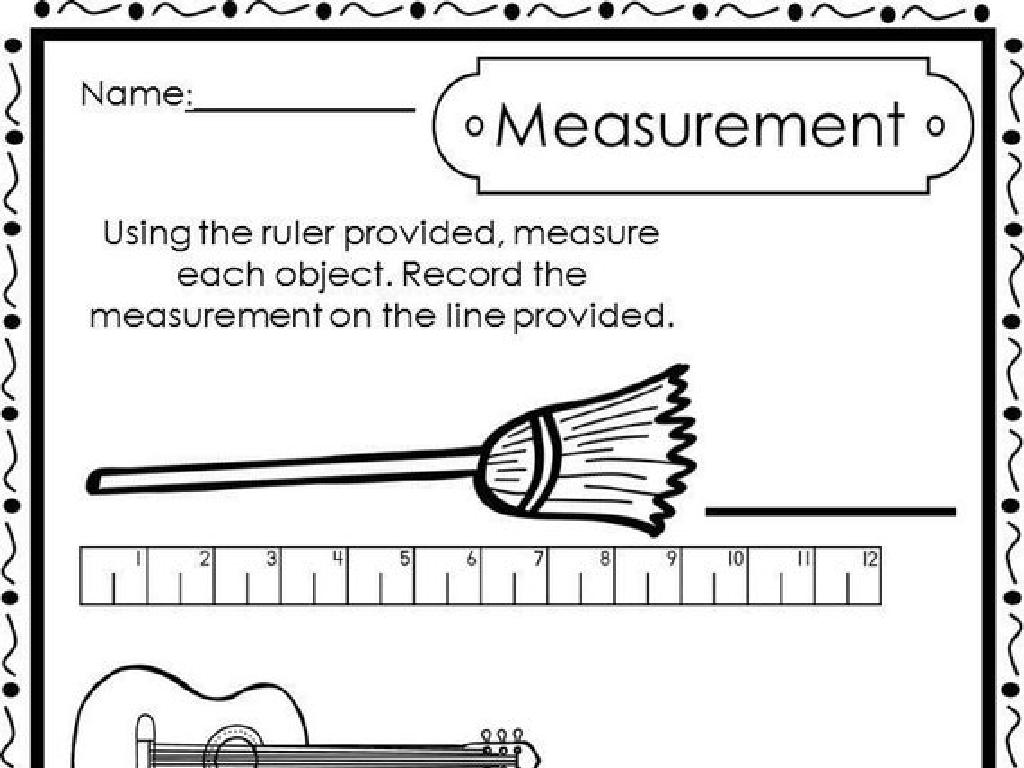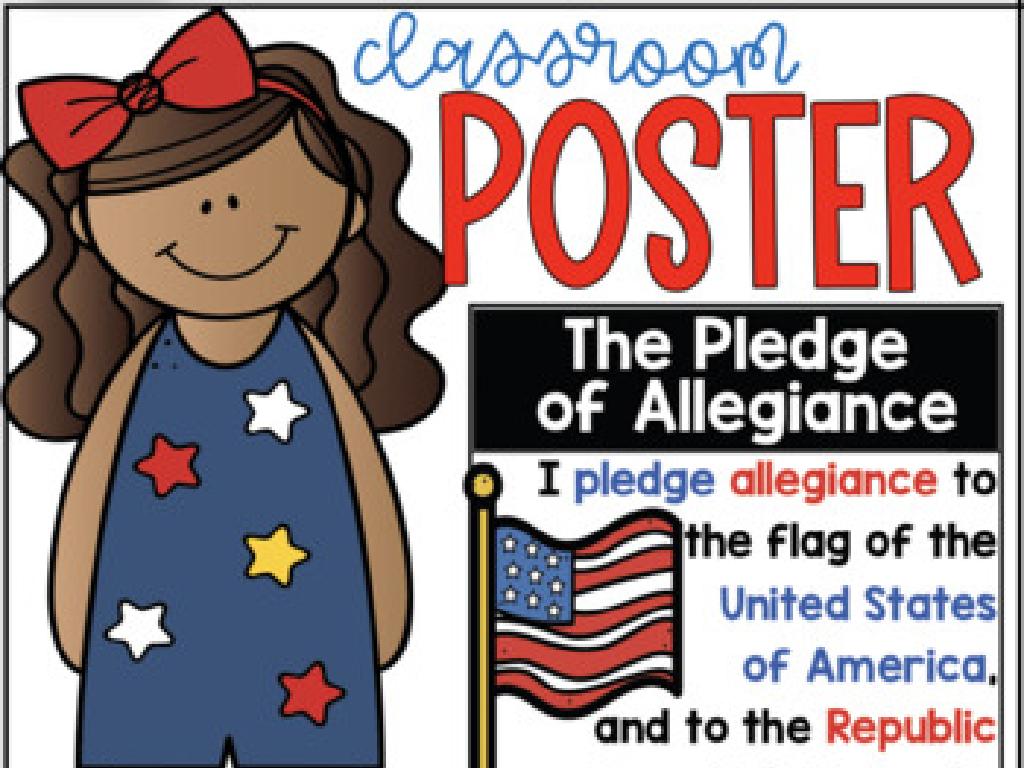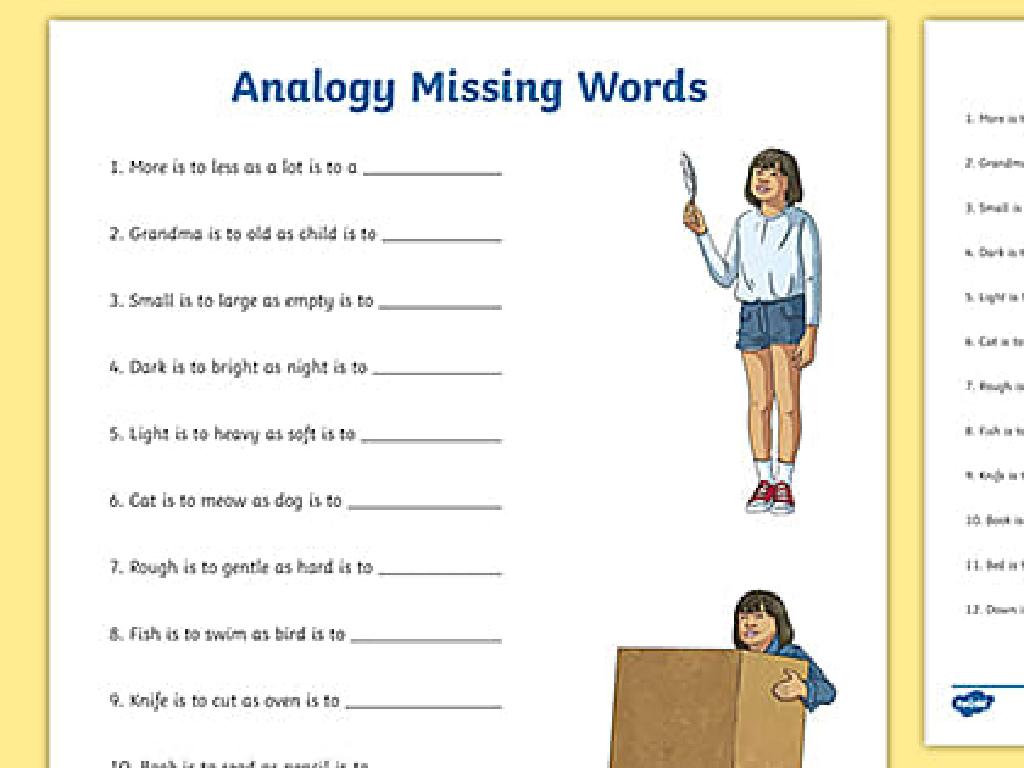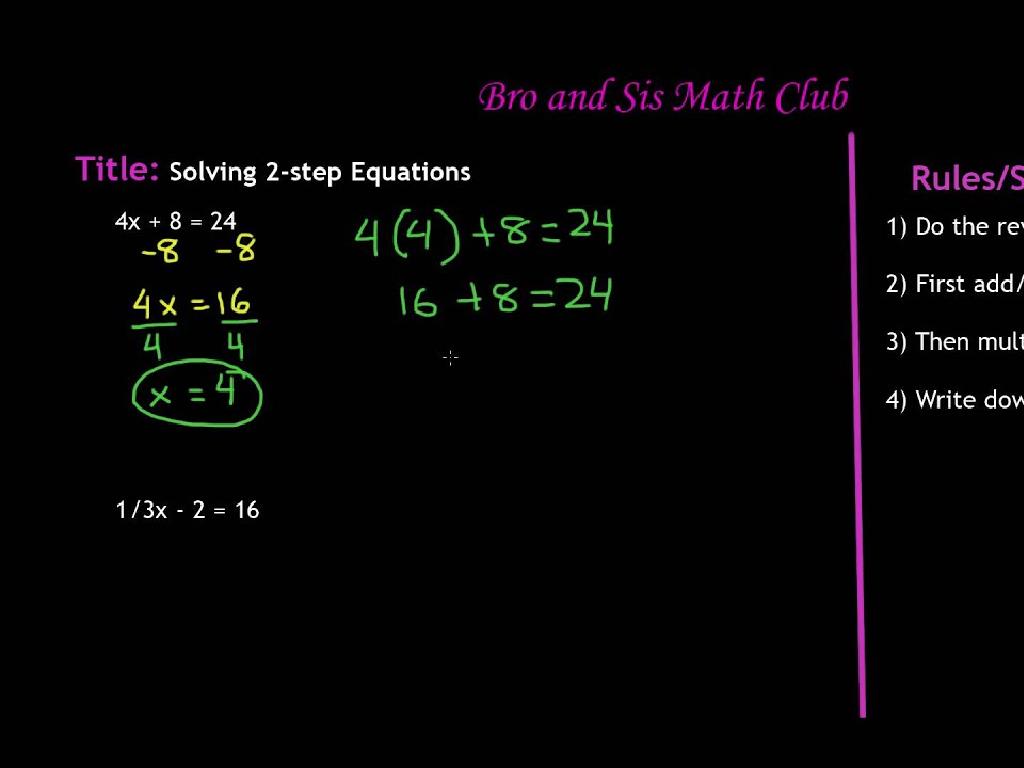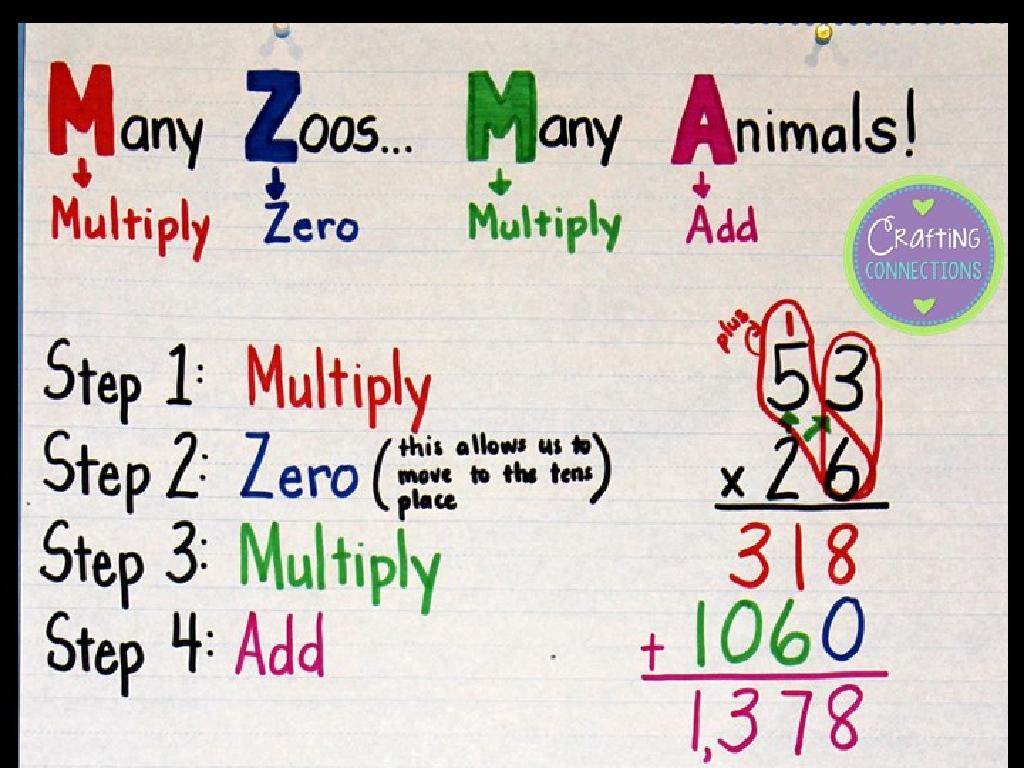Use Adjectives To Compare
Subject: Language arts
Grade: Fourth grade
Topic: Adjectives And Adverbs
Please LOG IN to download the presentation. Access is available to registered users only.
View More Content
Introduction to Adjectives
– What are adjectives?
– Words that describe nouns, like ‘happy’ or ‘blue’.
– Exploring descriptive words
– They give more information about objects, people, or places.
– Adjectives in sentences
– ‘The sunny day made us cheerful’ – ‘sunny’ and ‘cheerful’ are adjectives.
– Practice with examples
– Find adjectives in a book and share with the class.
|
Begin the lesson by explaining that adjectives are words used to describe or modify nouns and pronouns. They can tell us what kind, how many, or which one. Use everyday objects in the classroom to demonstrate descriptive words. Provide clear examples of adjectives in sentences to illustrate their use in context. Encourage students to think of their own adjectives and use them in sentences. As an activity, have students find adjectives in a book they are reading and write sentences using those adjectives. This will help them understand how adjectives enhance the meaning of a sentence and make it more vivid and interesting.
Using Adjectives to Compare
– Understanding comparison
– Comparison means finding out how things are alike or different.
– Compare with adjectives
– We use adjectives like ‘taller’ or ‘shorter’ to compare two things.
– Describing differences
– Adjectives can show size, speed, or other qualities.
– Common comparison words
– Words like ‘bigger’, ‘smaller’, ‘faster’, ‘slower’ help us compare.
|
This slide introduces the concept of comparison using adjectives, which is a key component of descriptive language. Start by explaining that comparison is a way to evaluate the similarities or differences between two items. Emphasize the use of adjectives to describe these differences, and provide examples of common adjectives used for comparison. Encourage students to think of their own examples and to practice using these adjectives in sentences. The goal is for students to understand how to use comparative adjectives to make their writing more vivid and precise.
Comparative Adjectives
– How to use ‘-er’ with adjectives
– Add ‘-er’ to short adjectives to compare two things, like ‘small’ becomes ‘smaller’.
– When to say ‘more’ with adjectives
– Use ‘more’ for longer adjectives with two or more syllables, like ‘beautiful’ to ‘more beautiful’.
– Compare with ‘-er’: ‘taller’
– ‘Tall’ becomes ‘taller’ when comparing the height of two people.
– Compare with ‘more’: ‘more interesting’
– ‘Interesting’ is a long word, so say ‘more interesting’ when comparing two stories.
|
This slide introduces the concept of comparative adjectives to the students. It explains the basic rule of adding ‘-er’ to short adjectives when comparing two things, such as ‘short’ to ‘shorter’. For longer adjectives, typically those with two or more syllables, the word ‘more’ is used to create the comparative form, such as ‘more beautiful’ instead of ‘beautifuller’. Provide clear examples like ‘taller’ for a direct comparison and ‘more interesting’ for a comparison that requires ‘more’. Encourage students to think of adjectives from their daily life and practice turning them into their comparative forms. This will help them understand when to apply the rules of ‘-er’ and ‘more’ in their writing and speaking.
Superlative Adjectives
– Forming superlatives with ‘-est’
– Add ‘-est’ to short adjectives, like ‘tall’ becomes ‘tallest’
– Using ‘most’ with adjectives
– Use ‘most’ for longer adjectives, like ‘interesting’ becomes ‘most interesting’
– Compare ‘tallest’ and ‘most interesting’
– ‘Tallest’ describes the highest in height, ‘most interesting’ the highest in interest
– Practice with examples
|
This slide introduces students to superlative adjectives, which are used to compare more than two things or to state the extreme degree of a quality. Teach students the rule of thumb for adding ‘-est’ to short adjectives and using ‘most’ for longer adjectives. Provide clear examples to illustrate the difference, such as ‘tallest’ for simple adjectives and ‘most interesting’ for complex adjectives. Encourage students to come up with their own examples and to practice forming superlative adjectives from adjectives they are already familiar with. This will help them understand how to use these forms correctly in their writing and speech.
Irregular Adjectives: Beyond the Rules
– What are irregular adjectives?
– Adjectives that don’t follow the regular pattern of adding -er or -est.
– ‘Good’, ‘better’, ‘best’
– ‘Good’ becomes ‘better’ for comparative and ‘best’ for superlative.
– Not all adjectives are the same
– Let’s practice with examples
– Find and use irregular adjectives in sentences.
|
This slide introduces irregular adjectives to the students, explaining that they do not follow the typical pattern of adding -er or -est to form their comparative and superlative degrees. Use ‘good’, ‘better’, and ‘best’ as primary examples to illustrate the concept. Emphasize that while most adjectives follow the regular pattern, some have unique forms that students need to memorize. Encourage practice by providing sentences where students can replace regular adjectives with their irregular forms. For example, ‘She did a good job’ can be changed to ‘She did a better job than her friend’ and ‘She did the best job in the class.’
Let’s Practice Together: Adjectives in Action!
– Fill in blanks with comparative adjectives
– Use ‘er’ for comparing two things, like ‘taller’ or ‘smaller’
– Create sentences with superlative adjectives
– Use ‘est’ for the highest degree, like ‘tallest’ or ‘smallest’
– Class activity: Describe a classmate
– Say something nice about someone using ‘er’ and ‘est’
|
This slide is designed for a class activity to practice using comparative and superlative adjectives. Start by explaining that comparative adjectives compare two things and often end in ‘er,’ while superlative adjectives are used to describe the highest degree of something and often end in ‘est.’ For the first activity, provide sentences with blanks for students to fill in with the correct comparative adjectives. Next, have students create their own sentences using superlative adjectives to describe something that is the most of a particular quality. Finally, engage the class in a positive activity where they describe their classmates using both comparative and superlative adjectives. This will not only reinforce the lesson but also build a positive classroom environment. Possible activities include: writing secret notes of kindness, creating a ‘compliment web’ where each student says something nice about another, or drawing portraits with descriptive captions.
Class Activity: Adjective Hunt
– Find objects to compare in class
– Use comparative adjectives in sentences
– Look for items that are similar but not the same, like two different books or pencils.
– Use superlative adjectives in sentences
– Find the biggest or smallest item and describe it using words like ‘biggest’ or ‘smallest’.
– Share your descriptive sentences
|
This activity is designed to help students understand and use comparative and superlative adjectives. Start by explaining that comparative adjectives compare two things (e.g., ‘The blue book is thicker than the red book’), while superlative adjectives compare three or more things and show the highest degree (e.g., ‘The blue book is the thickest of all the books’). Have students walk around the classroom to find objects they can compare. They should then write sentences using comparative and superlative adjectives to describe these objects. Afterward, students will share their sentences with the class, providing an opportunity for peer learning and teacher feedback. Possible variations of the activity could include comparing students’ heights, lengths of pencils, or even the number of pages in their notebooks.
Conclusion: Adjectives to Compare
– Recap: Comparing with adjectives
– Why descriptive words matter
– They make writing vivid and interesting
– Homework: A story with comparisons
– Write a short story using your new skills
– Use 5 comparative and superlative adjectives
– Examples: ‘taller’ for comparative, ‘tallest’ for superlative
|
As we wrap up today’s lesson, remind students of the importance of using adjectives to compare objects, people, or events. Emphasize how descriptive words enhance writing, making it more engaging and expressive. For homework, students are tasked with writing a short story that includes at least 5 comparative adjectives (e.g., bigger, faster, higher) and 5 superlative adjectives (e.g., biggest, fastest, highest). This will help them apply what they’ve learned in a creative context. Encourage them to think about characters or items they can compare in their stories. Provide examples and guidance on how to use these adjectives effectively. The next class will start with sharing some of their stories, fostering a collaborative learning environment.

